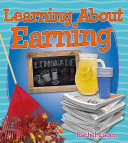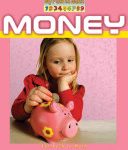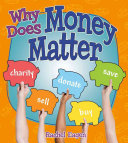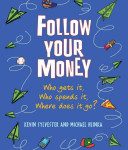Listed below are selected teacher resources, picture books, and non-fiction related to financial literacy.
Teacher Resources
 Fun with finance: Math + literacy = success
Fun with finance: Math + literacy = success
by Carol Peterson
Grades: K-6
This book focuses on a range of topics, from currency and the global economy, to business entities, savings, credit, real estate investments, the markets, budgeting, and goal planning. Each chapter offers grade-appropriate lessons, with a readers theatre script, glossary, cross-curricular activities, a list of Web sites, and even a board game, to make learning a genuinely successful enterprise.
 Financial literacy education: Addressing student, business, and government needs
Financial literacy education: Addressing student, business, and government needs
by Jay Liebowitz
Grades: K-12
Faced with an array of complex financial services and sophisticated products, many people lack the knowledge and skills to make rational, informed decisions on the use of their money and planning for future events, such as retirement. This book shows what teachers can do to improve financial literacy awareness and education, including the use of interactive games and tutorials, peer-to-peer mentoring, and financial literacy contests in addition to more formal education. (E-book only)
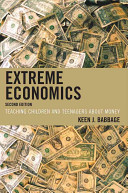 Extreme economics: Teaching children and teenagers about money
Extreme economics: Teaching children and teenagers about money
by Keen J. Babbage
Grades: K-12
What should children and teenagers know about personal finance? How can sound financial principles and money management be taught to these students? The author identifies, through current research, what children and teenagers need to know about managing funds. It shows educators how to design instructional activities that enable students to learn about money management in fascinating and meaningful ways.
 Using deliberative techniques to teach financial literacy
Using deliberative techniques to teach financial literacy
by Nancy Claxton
Grades: 9-12
This book is written for teachers who want to bring innovation and participatory teaching techniques into their classroom. Using the methodologies of debate, role plays, simulations, and presentations, teachers can teach essential financial literacy objectives to secondary level students. Topics include basic principles of money management, credit and debt management, risk management, and more.
Picture Books
 Lemonade in winter: A book about two kids counting money
Lemonade in winter: A book about two kids counting money
written by Emily Jenkins, illustrated by G. Brian Karas
A lemonade stand in winter? Yes, that’s exactly what Pauline and John-John intend to have, selling lemonade and limeade–and also lemon-limeade. With a catchy refrain (Lemon lemon LIME, Lemon LIMEADE! Lemon lemon LIME, Lemon LEMONADE!), they try to attract customers as Pauline adds up their earnings.
by Vera B. Williams
A child, her waitress mother, and her grandmother save dimes to buy a comfortable armchair after all their furniture is lost in a fire.
Non-Fiction
by Rachel Eagan
Grades: K-3
Young readers will learn about how money is earned and the nature of goods and services in this book. Real-world examples and scenarios help readers better understand the role of work, the concept of earning a salary or wage, and the roles of producers and consumers.
by Penny Dowdy
Grades: K-3
This book introduces young readers to the concepts of currency, the value of unique coins and bills, and counting money. Part of the My path to math series.
by Rachel Eagan
Grades: K-3
This book explores the role of money in the lives of people around the world, including its necessity for meeting basic needs. Through authentic examples and engaging scenarios, young readers will learn that money, when used wisely, can be an instrument of good in the world. Part of the Money sense: an introduction to financial literacy series.
by Rebecca Rissman
Grades: K-3
Children learn about what money is, how it is used, and why it is important. Part of the Money around the world series.
written by Kevin Sylvester and Michael Hlinka, illustrated by Kevin Sylvester
Grades: 4-7
When you pay for that cool pair of shoes or a tasty snack, what happens to that money once it leaves your hands? Who actually pockets it or puts it into the bank? Discover the trail your money takes as it goes to pay for everything including the raw materials used to make a product, the workers who produce it, and the advertisers who promote it.
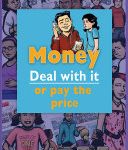 Money: Deal with it or pay the price
Money: Deal with it or pay the price
written by Kat Mototsune, illustrated by Remie Geoffroi
Grades: 4-7
Money can’t buy happiness, but it can lead to all sorts of trouble at home, school, work, and among friends. This book looks at the way we value, display, and covet wealth and will help kids make change when costly conflicts arise. Part of the Deal with it series.
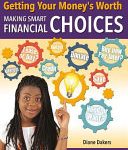 Getting your money’s worth: Making smart financial choices
Getting your money’s worth: Making smart financial choices
by Diane Dakers
Grades: 5-8
This book helps young readers build the skills to make smart choices when spending and saving their money. Realistic examples provide an understanding of the outcomes of spending using different means such as cash or credit. Readers will learn about the benefits of saving money, the various ways to do it, and how a bank manages money. Essential concepts such as credit reports and cost of living are introduced. Part of the Financial literacy for life series.
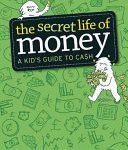 The secret life of money: A kid’s guide to cash
The secret life of money: A kid’s guide to cash
written by Kira Vermond, illustrated by Clayton Hamner
Grades: 5-9
This book uses anecdotes, comics, and surprising everyday connections to help young readers see and understand cash from an entirely different angle. From the history of different currencies to why we buy what we buy, from how charities and credit cards work to saving and investing, readers will gain not only an appreciation for the many ways that money changes and influences their lives, but also an understanding of the control they have over it.
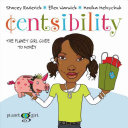 Centsibility: The Planet Girl guide to money
Centsibility: The Planet Girl guide to money
written by Stacey Roderick and Ellen Warwick, illustrated by Monika Melnychuk
Grades: 5-9
Today’s girl is no fool: she knows money can’t buy happiness. But if she wants on the bus, or a snack when she’s out, she needs some cash flow. This book gives practical advice on a range of topics relating to money: tips on jobs, saving, debt, spending and budgeting, how to become an entrepreneur, what to scrimp on (and what not to), and more.
Finding More Resources
To find more resources in this area, try the following:
- Search using the General tab on the UBC Library website to look for material in all UBC Library branches.
- Search using “Search Education Resources” box in the left hand bar on the Education Library website to limit your results to materials in the Education Library.
- Use specific search terms to narrow your results, such as “financial literacy–juvenile literature”, “finance, personal–study and teaching”, or “money–juvenile literature”.
- To find lesson plans, include “lesson plans”, “lesson planning”, or “activity programs” in your search terms.
For more help with searching, please visit the Library Service Desk or e-mail ed.lib@ubc.ca.

